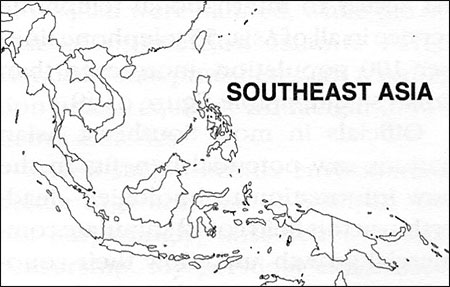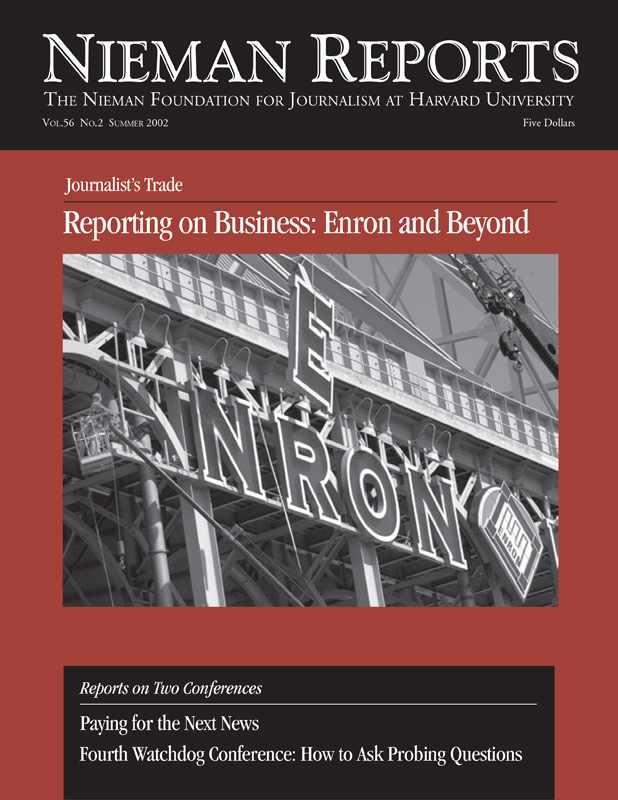
Prior to 1980, Southeast Asian governments generally employed censorship to block news considered “unsuitable.” Most nations had simply maintained censoring policies along the lines of ones established decades earlier by colonial administrations. This was rationalized on the grounds that political systems were not yet well established, and governments needed protection from divisive controversies that might be sparked by unrestrained news coverage. By the 1990’s, that argument was no longer convincing because governments had become mature and firmly established, so another proposition was advanced—the Asian values thesis.
The Asian values argument holds that Asian cultures are fundamentally different from Western ones and that countries across the continent share a common set of values. Among other things, these Asian values are said to favor public “protection” against undesirable materials through censorship. According to this thesis, restricting access to information can be seen as a legitimate function of governments because it fits cultural values unique to Asia.
Regardless of the justifications offered, the steady march of electronic technology made it difficult for governments to sustain their censorship policies. A flood of videocassettes washed over Asia in the 1980’s, and within a decade satellite-relayed television could be received throughout the region. Although many governments tried to prevent uncensored access to these media, it proved impractical to block them entirely. For example, although Singapore and Malaysia banned personal ownership of satellite equipment, in remote areas of East Malaysia, on the island of Borneo, residents could easily slip across the border into Indonesia to purchase home-built satellite receivers. Complete systems could be had at the equivalent of a few hundred U.S. dollars. Some estimates placed the number of these illegal satellite dish setups in Malaysia in the tens of thousands by the mid-1990’s. Lavishly publicized raids and show trials barely slowed the spread of videos and satellite receivers.
One reason for the quick spread of technology was that by the early 1970’s Southeast Asian countries had become the world’s leading producers of key electronic components. As a result, countries in the region gained early access to emerging technologies and enjoyed a tremendous economic boost with the personal computer boom of the 1980’s. With the exception of Laos and Burma, policymakers in Southeast Asian countries embraced computer technology in a big way. Of course, public access in the region was generally limited to urban, middle-class residents. For example, by 1999, about 30 percent of Singaporeans had Internet accounts and about 40 percent of homes owned a personal computer. Other kinds of information technologies were popular, too. In 1999, about half of Singaporeans carried a pager and almost one-third carried a cellular telephone. Singapore enjoyed the widest access to international telephone service in all of Asia, 55 telephone lines per 100 population, more even than Japan’s comparable figure of 49.
Officials in most Southeast Asian nations saw potential benefits in the new information technologies—leadership in this field could stimulate commercial growth and allow their countries to project an impression of modernity and technical advancement. Several Southeast Asian countries mounted aggressive promotional campaigns to encourage expansion in the information technology sector. Under a government-sponsored program in Malaysia, for instance, it was possible in the mid-1990’s to open an Internet account for the equivalent of about 10 dollars, and online access cost less than 50 cents per hour. A few countries were more hesitant: Burma and Laos had no Internet service at all until after 2000, and Vietnam allowed operation of only a limited number of state-owned Internet service providers.
To capitalize on the IT boom, the more technologically advanced countries in Southeast Asia launched expansive projects aimed at developing regional technology leadership, fashioning their nations as hubs for new information media. The Malaysian version of this initiative was dubbed the Multimedia Super Corridor (MSC). Authorities hoped the MSC could copy the success of California’s Silicon Valley by bringing together physical and intellectual resources in a narrow strip of land south of the capital, Kuala Lumpur. A similar and equally ambitious plan, called the Intelligent Island initiative, was inaugurated in Singapore at about the same time, in the mid-1990’s.
Because local capital in Malaysia was insufficient for these massive projects, obtaining direct foreign investment was vital. The prime minister of Malaysia, Mahathir Mohamed, energetically pitched participation in the MSC to many U.S. firms. Mahathir, who had been a frequent critic of Western news coverage of his country and of Western cultural products such as films and television programs, encountered immediate resistance. It soon became obvious that if Malaysia wished to position itself as a regional hub, it would have to provide assurances to potential investors that the MSC would be a zone of open and free information access. In other words, laws and censoring policies regarding these new technologies would have to be altered.
There appear to have been debates within the government about whether concessions of this sort would be acceptable. But, in the end, new cyber-laws ensuring free access to information via the Internet were adopted. No filtering of Web sites would be allowed. Malaysia’s decision was in contrast to policies maintained in neighboring Singapore and in China where selected Web sites are blocked by government censoring regulations.
Unabashed censoring of the Internet has been Singapore’s rule from the beginning. A 1992 government study recommended technical measures to restrict access to information deemed objectionable. Once implemented, these restrictions meant that no one could browse Web sites on the government’s forbidden list. Singapore’s minister for information and the arts and health, Brigadier-General George Yeo, explained the aim of this policy. It was not, he said, to block information because the “clash of ideas is good but we do not want ideas that are extreme.”
Singapore became a leader in Internet blocking technology, eventually marketing its know-how abroad to countries such as Burma, where similar procedures are now in place. Systems like this work by routing requests for Internet sites through large screening computers called proxy servers, to check whether wanted sites are on unapproved lists. Of course, these techniques are imperfect. Despite the best efforts of censors, it is impossible to keep up with the constantly growing and evolving inventory of Web sites that government officials find unacceptable.
One interesting result of Malaysia’s information policies—censoring what is broadcast and printed but not Internet content—has been a dramatic rise in the popularity of online newspapers. First to benefit was PAS, the Islamic opposition party and publisher of an opposition newsletter, Harakah, which frequently covered stories that mainstream newspapers would not. By enforcing rules, the government had driven the printed newsletter out of wide circulation but, in response, Harakah built an online version that flourished until the publication’s editor Zulkifli Sulong and the newspaper’s printer Chea Lim Thye were arrested and charged with sedition.
Even more surprising has been the experience of Malaysiakini, an online newspaper that has no print version. Started with a grant supplied by the Southeast Asian Press Alliance, this online newspaper says it intends to “push the boundaries of free speech and press freedom in Malaysia by providing credible and up-to-date news and analysis.” Working with a staff of only 13, the Web site claims daily hits of around 100,000. But on days when there is breaking news, readership can rise as high as 400,000. These figures are similar to ones posted by the major print newspapers, a remarkable result in a country where less than one-third of the population has Internet access.
Elsewhere, responses to online services vary. Officials in Burma, possibly taking note of Indonesia’s experience in 1998, have mounted their own Web site to counter the numerous opposition Internet sites that have materialized recently. Political opposition has found the Web an easy way to reach out to potential supporters. Their efforts have even included an online radio station, the Democratic Voice of Burma, based in Norway. This station shows how geographic boundaries can melt away, thanks to Internet’s reach. Today via the Web Southeast Asians can tap into an immense array of sources unavailable to them just a few years ago, and this has altered forever the way that governments manage communication across their national borders.
Drew McDaniel is a professor in the School of Telecommunications at Ohio University. He is also the author of “Electronic Tigers of Southeast Asia: The Politics of Media, Technology and National Development,” published this year by Iowa State University Press.



